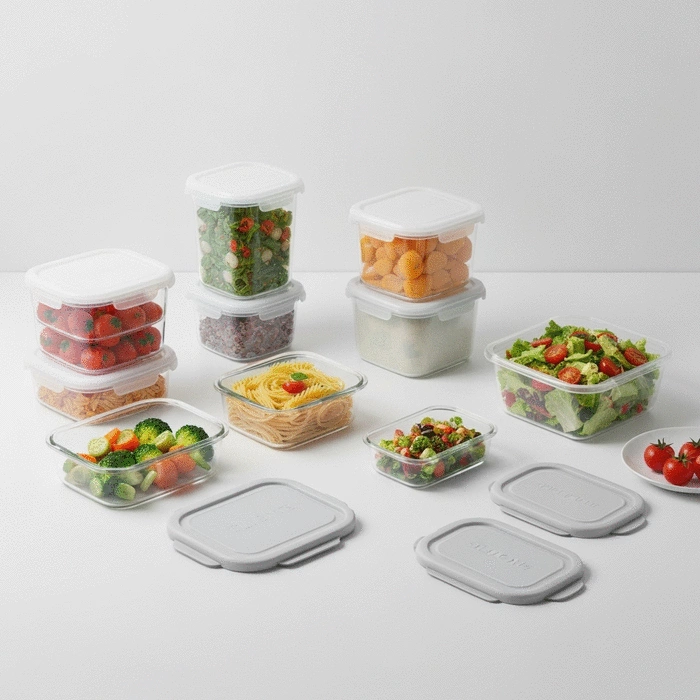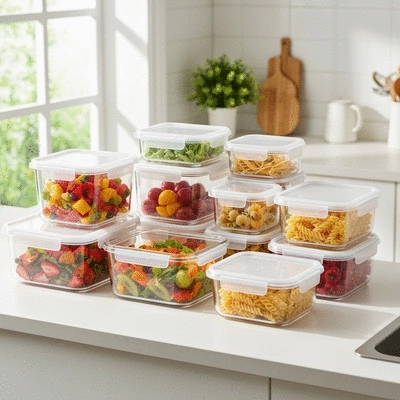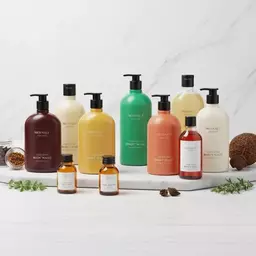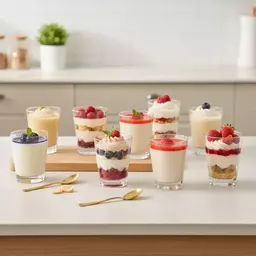Polypropylene (PP)
Benefits: High heat tolerance, stable, lightweight, durable.
Limitations: Not all versions are microwave-safe; check labels.
Stay ahead with the latest packaging innovations and insights from Clara Voss and Innovative Packaging Solutions.
Posted on: 2025-10-28
By: Clara Voss
In a world where convenience meets health, understanding microwave-safe containers is essential for both consumers and food businesses. What if you could effortlessly heat your meals without worrying about harmful chemicals or damaging your containers? This guide delves into the intricacies of microwave safety, empowering you to make informed choices.
Each material offers unique benefits and limitations for microwave use. Below is a comparison of five common materials.
Benefits: High heat tolerance, stable, lightweight, durable.
Limitations: Not all versions are microwave-safe; check labels.
Benefits: Eco-friendly, biodegradable, compostable, microwave-safe.
Limitations: Can be more expensive than traditional plastics.
Benefits: Often compostable & recyclable (if uncoated), can be microwave-safe.
Limitations: May not handle moisture/heat well; check coatings for microwave safety.
Benefits: Durable, non-reactive, withstands high temperatures, no chemical leaching.
Limitations: Heavy, can shatter if dropped, not ideal for busy takeaway environments.
Benefits: Safe for microwave use (if labeled), avoids harmful BPA chemicals.
Limitations: Must specifically look for "BPA-free" and "microwave-safe" labels.
In today's fast-paced world, microwave-safe takeaway containers are essential for food businesses and consumers alike. They provide a convenient way to enjoy meals without the hassle of transferring food to different dishes. But what exactly does it mean for a container to be microwave-safe? Let’s dive into this topic to better understand the key factors at play!
To ensure microwave safety, a container must be made of materials that won’t warp, melt, or release harmful chemicals when heated. This is crucial not only for the quality of the food but also for consumer health. As the FDA highlights, proper microwave usage, including the right containers, is key to food safety. Let's explore the various materials and their properties that determine whether they can be safely used in the microwave.
Microwave-safe containers are designed to withstand high temperatures without compromising their structural integrity or safety. An important factor is the melting point of the material. For instance, a container made from a material that melts at a lower temperature than what microwaves can generate would be unsafe to use. Additionally, containers should not have any metallic components, as metals can cause sparks and fires.
When selecting a container, it’s crucial to look for labels indicating that it is microwave-safe. These labels often come with symbols that help consumers identify safe options, a topic we will delve into later in this article. But first, let’s take a closer look at the materials commonly used in microwave-safe takeaway containers.
Several materials are commonly used to craft microwave-safe takeaway containers. Each has its unique benefits and limitations, so understanding them can help you make informed choices. Below, I’ll share insights on five popular materials that meet microwave safety standards.
Polypropylene, often abbreviated as PP, is one of the most widely used materials in microwave-safe containers. Its ability to tolerate high temperatures while remaining stable makes it a favorite among food manufacturers. Plus, it’s lightweight and durable, allowing for easy transport and storage. However, it’s essential to ensure that any container made from PP is labeled as microwave-safe, as not all versions are suitable for reheating.
Bagasse, a byproduct of sugarcane processing, is gaining popularity as an eco-friendly alternative to traditional plastic. It’s biodegradable and compostable, making it a fantastic choice for environmentally conscious businesses. Bagasse containers are also microwave-safe, allowing consumers to reheat their meals without worry. As a passionate advocate for sustainability, I believe incorporating bagasse into our product line at Innovative Packaging Solutions can help reduce our carbon footprint!
Paper-based containers can also be microwave-safe, but they come with their own set of challenges. While they are often compostable and recyclable, not all paper containers can handle moisture and heat well. It’s vital to check for coatings that might be non-microwave-friendly. When done right, however, paper can offer a great option for takeaway packaging!
Glass containers are a popular choice for those looking for microwave-safe options due to their durability and non-reactive properties. They can withstand high temperatures without leaching chemicals. However, glass can be heavy and may shatter if dropped, which poses a risk in busy takeaway environments. It’s crucial to handle them with care, ensuring a safe experience for both customers and staff.
Finally, it’s important to consider BPA-free plastic containers. BPA, or bisphenol A, is a chemical that has raised health concerns over the years. Chemical Safety Facts provides useful information on the safety of microwaving plastics, including the importance of BPA-free options. Many manufacturers now offer BPA-free options that are safe for microwave use. When selecting plastic containers, always look for labels indicating they are free from BPA to ensure safe reheating of food.
In conclusion, understanding the various materials and their microwave-safe properties can help you make informed decisions for your takeaway packaging needs. By prioritizing safety and sustainability, businesses can enhance their product offerings and cater to customer preferences. Let’s move on to recognizing the microwave safety symbols that guide consumers in their choices!
When selecting microwave-safe containers, look for those that are labeled as "BPA-free" to avoid harmful chemicals. Additionally, consider investing in reusable glass or silicone containers, which are not only safe for microwave use but also environmentally friendly and durable!
As we navigate the world of microwave-safe containers, it’s essential to consider a few crucial factors that ensure both safety and convenience. Whether you're reheating leftovers or prepping meals, understanding these points can make all the difference in your experience. Here are some key takeaways to remember:
By keeping these essential points in mind, you can confidently choose the right containers for all your microwave needs. It’s all about striking a balance between convenience and safety!
When it comes to using microwave-safe containers, there are several practices that can enhance safety and performance. Here’s what I recommend:
These practices not only help in ensuring safe heating but also preserve the quality of your food. Remember, the aim is to enjoy your meal without any worries!
Choosing the right microwave-safe container can seem overwhelming, but it doesn't have to be! Here are some tips to simplify your decision:
By evaluating your specific needs, you can find the perfect containers that fit your lifestyle and enhance your meal prep efficiency!
Container size plays a critical role in meal prep and food storage. It's important to choose appropriately sized containers to avoid food waste and ensure easy reheating. Here are my recommendations:
Keeping these size options in mind will help streamline your meal prep process, making it easier to store and reheat your favorite dishes!
At Innovative Packaging Solutions, we are passionate about sustainability. As consumers, we can also take steps to make eco-friendly choices in our takeaway habits. Here's how you can get involved:
Each small change can contribute to a larger impact on the environment, and together, we can promote a culture of sustainability!
Making sustainable choices doesn't have to be difficult! Start by being mindful of the materials used in your takeaway containers. Consider switching to reusable options whenever possible. Not only does this reduce waste, but it can also save you money in the long run. Remember, every little effort counts!
I’d love to hear about your experiences with microwave-safe containers! What materials do you prefer, and have you come across any innovative options? Sharing our stories can help others make informed choices too. Let’s continue this conversation and promote safe and sustainable practices together!
Here is a quick recap of the important points discussed in the article:



 Choosing the right planting method can significantly impact your gardening success. As a gardener, u
Choosing the right planting method can significantly impact your gardening success. As a gardener, u
 As brands strive to resonate with an increasingly personalized consumer base, the packaging of produ
As brands strive to resonate with an increasingly personalized consumer base, the packaging of produ
 In the world of foodservice, presentation and convenience are key. By embracing microwave-safe desse
In the world of foodservice, presentation and convenience are key. By embracing microwave-safe desse